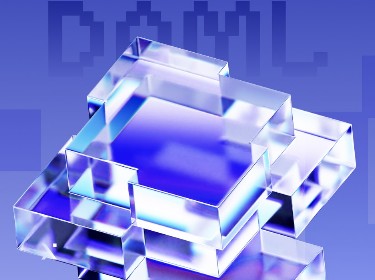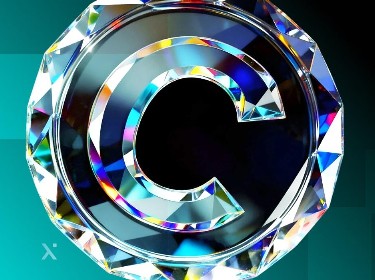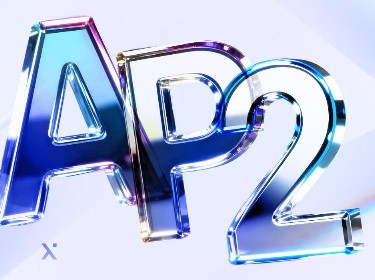Between 2021 and 2022, we often heard about million-dollar NFT purchases. But is the NFT boom over? Not really. In fact, NFTs have gone even further — into industries from sports and gaming to logistics and even wine production.
When we first heard that digital artist Pak’s creation, ‘Merge,’ was sold for $91.8 million and Beeple’s ‘The First 5000 Days’ — for $69.3 million, we were too stunned to speak. You probably felt the same.
Meanwhile, the world has got used to hearing news about artists, athletes, and celebrities issuing non-fungible tokens and selling them for big bucks. It’s no surprise that Paris Hilton, Snoop Dogg, and Steve Aoki, for instance, are opening up new revenue streams through the issuance of NFTs.
But are NFTs a long-term phenomenon and can they be applied in areas other than art and show business? Let’s find out!
Top 8 most promising NFT use cases
Tokenized art and game collectibles have made the biggest headlines. These tokens are mostly associated with artwork and games. Yet NFTs are not just about these two areas anymore.
In this video, we cover NFTs from a business perspective. If you still have questions about how to issue NFTs, how much it costs to mint them, and how to verify their authenticity, here you will find all the answers.
So, what else can NFTs be used for? As the tech matures, more use cases are emerging. NFTs have now been introduced to logistics, real estate, DeFi, fashion, and many other industries. Let’s take a closer look at each of these domains to see what exactly NFTs can do there.
1. Virtual land and real estate as NFTs
Real estate and land, both physical and virtual, acquired in the form of NFTs have been one of the hottest NFT trends for several years now.
For example, Decentraland — one of the most popular projects offering virtual property — has been growing since the very beginning of the NFT boom. Despite the general downward trend in NFT sales, the platform still experienced a remarkable 440% year-over-year growth in NFT minting, totaling 2.7 million NFTs in 2022.
The platform also witnessed a significant increase in community engagement, with over 1 million unique active users, marking a 12.9% rise from the previous year.
As for physical real estate, we all know that it costs a fortune, involves a lot of red tape, and it’s just way too complicated. NFTs in this area could be game-changing, and here’s why:
- They can introduce fractional tokens and, as a result, fractional ownership. This will open doors to smaller investors
- They can be used as registries that clearly define property rights and enable fast and convenient ownership transfer
- They can eliminate the need for multiple intermediaries thereby saving the investor and property owner time and money
While real estate is an industry that doesn’t really welcome radical change, many real estate agencies are already starting to dive into NFTs and consider implementing them.
2. NFTs in logistics and supply chain
![]()
NFTs in logistics can be assigned to unique items in order to track, for example, luxury goods on their journey to the end consumer. A logistics software development company can help integrate this technology into existing systems, ensuring seamless tracking and verification processes.
Let’s say, a collection of gorgeous dresses produced in Italy need to be delivered to a store in the USA. Each of them is assigned its own token, which is also physically placed on the package. By scanning the NFT, supply chain workers can check metadata on the dresses’ origin and track their entire journey. That metadata is timestamped, verified, and immutable, so there is almost no chance that the product will be replaced with a fake, as that would be detected right away.
As the dresses go through each stage of the delivery process, new timestamped metadata is recorded. When the dresses arrive at the store, the NFTs are scanned and the store can check all shipping details and verify the authenticity of the items delivered.
Find out how Walmart uses blockchain in its supply chain to ensure food quality and safety
3. NFTs in fashion and wearables
Fashion brands can issue and sell their own digital collections. In August 2023, the ‘Doodles’ NFT project collaborated with Crocs to launch a limited edition line of ‘holey shoes.’ The release of these shoes occurred on August 29th, priced at $120 per pair. Within just three days, the entire stock was completely sold out.
Buyers of these Crocs also received a unique digital collectible, which, if destroyed, unlocked two Crocs wearable NFTs that matched the Doodles NFT characters, along with a Stoodio Beta Pass card for use in the dynamic Doodles 2 NFT series.
This collaboration signifies a shift in the NFT industry from virtual to real, as projects like Doodles and others explore new avenues amid dwindling liquidity, combining digital offerings with physical merchandise.
4. NFTs for digital identity
Despite advances in technology and the introduction of new methods to protect personal data, identity theft cases continue to grow at an alarming rate. In 2022, the US Federal Trade Commission received over 5.1 million reports, encompassing identity theft incidents and complaints related to other consumer issues. This problem is so concerning that the global market for identity theft protection services is expected to reach $28.91 billion in 2029.
What can be done to better protect people’s data and help them take control of their own digital identity? NFTs could be one option. They offer a novel way for people to truly own their personal data. Almost any document, including licenses, birth certificates, and degrees can be tokenized and represented as an NFT. IDs or certificates, which are increasingly issued digitally, can be directly issued as non-fungible tokens via blockchain platforms.
However, this doesn’t imply open access to your files. For example, if you need to provide proof of education to a potential employer, you can grant specific access to your documents, allowing them to verify their authenticity.
Thus, using NFTs to digitally store documents and create digital identities gives users the opportunity to better manage their data and helps eliminate document forgeries.
5. NFTs and DeFi
As the NFT market grows, NFT collectors are striving to find new ways of capitalizing on their assets. Now, in addition to simply reselling tokens, collectors can leverage their assets using DeFi mechanisms such as lending, borrowing, and staking.
NFT holders can lend their NFTs to borrowers and receive interest. By lending through blockchain platforms, they don’t actually lend real NFTs, but token holders usually offer the full or partial value of the NFT in cryptocurrency.
This DeFi solution is truly groundbreaking in terms of its approach to decentralization and token distribution. See for yourself!
6. NFTs for the ticketing industry
The ticketing industry has always been a target for scalpers and scammers. Fans often spend huge amounts of money yet are unable to access the venue to see their favorite bands or sports teams. Meanwhile, organizers and performers not only lose significant revenue but potentially also the support of their fans.
The introduction of non-fungible tokens in the event and ticketing industry brings tremendous benefits to ticket-selling companies. Most importantly, if the company issues tickets as NFTs, the underlying blockchain technology will solve the problem of counterfeit tickets and thereby protect buyers.
The blockchain records information starting from the very creation of the ticket in the system. The information is timestamped, verified, and cannot be deleted, or tampered with, so the NFTs created on the blockchain help the audience verify the authenticity of their tickets and eliminate the chances of getting scammed or experiencing the inconvenience caused by scalpers.
In addition to this, NFTs can represent unique packages and experiences. The ticketing company can issue limited edition NFT tickets with unique designs. Fans can either win them or buy them. These NFT packages could include a meet and greet, a fan signing event, a personal meeting with a celebrity, and so on.
7. NFTs in loyalty programs
![]()
People love innovation, and if you want to grab customers’ attention by offering something new, you could start with an NFT loyalty program. You can apply gamification techniques: customers download your app, take quizzes about your brand history or current fashion trends, and earn tokens that can later be used as discounts. Your clients can also participate in surveys, thereby helping you to know your market better, and at the same time, they earn NFTs themselves.
Lacoste did just that. In July 2023, the company launched a virtual store, offering exclusive benefits to holders of its UNDW3 NFTs, pronounced “underwater.” This initiative, developed by Emperia, blends traditional eСommerce with a unique loyalty program.
UNDW3 token owners gain access to a VIP underwater-themed area, where they can exclusively purchase an apparel collection co-created with the UNDW3 community. Each item in this collection is accompanied by a digital NFT version and an AR feature. The store also features an advanced scavenger hunt game with weekly prizes.
This launch is part of Lacoste’s broader UNDW3 Web3 loyalty program, which includes a dynamic token system and a platform that turns shopping into an interactive game, complete with design contests and a community leaderboard. High scorers can win significant rewards, such as a trip to Paris or a feature in a social media campaign, fostering a unique blend of physical and digital retail experiences.
8. NFTs and the wine industry
Counterfeit wines are a multi-billion-dollar problem in the global wine industry. Counterfeit alcohol is not only wasted money, but also a serious threat to human health. Blockchain-driven wine NFT technology can help tackle this issue.
NFTs placed on wine bottles ensure the provenance and authenticity of each bottle on its way to the consumer. When choosing a bottle, the customer can scan the wine NFT and check where it was made and how it was delivered. In addition, the wine company can enable their customers to keep these NFTs and even trade them on marketplaces. This option could be applied to a limited-edition wine.
In November 2023, VIK Winery introduced its first NFT wine, a pioneering move in the Chilean wine industry. This venture, involving the highly-rated VIK 2018 vintage, combines traditional winemaking with modern blockchain technology.
The winery released 50 NFTs, each corresponding to a double magnum of the VIK 2018, a blend of 75% Cabernet Sauvignon and 25% Cabernet Franc, aged for 26 months in French oak barrels. This initiative not only modernizes wine collecting but also enhances the authenticity and traceability of the wine. NFT owners are offered a unique experience, with the choice to either trade their digital tokens or exchange them for the actual wine bottles, carefully preserved in the winery’s cellar.
Check out how wine companies are embracing AR to attract customers and provide them with unique experiences
Best NFT projects to follow in 2024
![]()
Now that we’ve talked about NFTs and examples from various industries, let’s find out more about the best NFT crypto projects. Perhaps some of them will inspire you to create new ideas for your own platforms and projects.
Decentraland
Decentraland is currently one of the most popular NFT projects. It is a fully decentralized virtual world where users can create, buy, and sell land, avatar wearables, names, and other digital assets.
Moreover, it is the users who own this virtual world and literally rule it. This is made possible by the fact that Decentraland has its own DAO (Decentralized Autonomous Organization). The DAO transfers all the rights to control the virtual space to its users.
The Dematerialised
The Dematerialised is a Web3 fashion marketplace designed for authenticated virtual goods. The platform runs on the Lukso blockchain that is based on the Proof of Stake consensus mechanism.
In February 2023, a female K-pop group aespa teamed up with The Dematerialised to launch a pioneering collaboration that features a digital capsule collection and editorial series centered around aespa members and their avatars, æ-aespas.
The collection includes unique æ-pets, fashion accessories, and exclusive outfits, reflecting aespa’s deep involvement in the design process. Each member of aespa — Karina, Winter, Ningning, and Giselle — has contributed their personal style to the collection, from denim outfits to statement accessories like a chunky hair clip and a bold tie, all reflecting their individual styles. The launch highlights the collaboration’s role in shaping the future of digital fashion and music.
Nouns
The Nouns project is focused on improving the formation of on-chain avatar communities. One of the project’s distinctive elements is that one Noun (NFT character) will be created every day, forever.
Another unique aspect of the project lies in the formation of their own DAO treasury, which collects 100% of the funds from all their NFT sales. The treasury is governed by the founders of the project who will then decide on its future use.
Aura
The Aura Blockchain Consortium is the first luxury global blockchain system introduced by brands for brands. Its founder group consists of LVMH, Prada Group, and Richemont.
Aura is based on Ethereum and utilizes Microsoft Azure. The platform is designed to improve the luxury customer experience and address common issues such as counterfeiting and reselling stolen luxury goods.
Since each product is assigned an NFT and only participating brands can add new information to the Aura blockchain, every shopper can access the product’s history and be sure that they are purchasing an authentic item.
CryptoPunks
CryptoPunks is an industry veteran. Larva Labs, the company behind CryptoPunks, launched the project back in 2017 when very few people knew what NFTs were and many were just discovering blockchain technology.
It’s a collection of 10,000 one-of-a-kind avatars (24×24 pixel art images) with proof of ownership stored on Ethereum. As of November 17, 2023, CryptoPunks NFTs have a market cap of 568,659 ETH (or $1.1 billion).
Introduce yourself to xtingles — the first NFT marketplace for ASMR-tists and their listeners
WISeID
The WISeID solution introduced by WISeKey International Holdings offers users the chance to create and manage their digital identities to perform secure transactions and protect their personal information.
WISeID users can also protect their email messages, use strong authentication to securely connect to WISeID-enabled services, and apply digital signatures to electronic documents.
In November 2022, the company enhanced its WISeID platform to allow users to mint NFTs directly on its WISe.ART marketplace. WISeKey provides strong security for both digital and physical NFTs, ensuring a safe process from start to finish. Users have full control over their WISeID NFTs, including who can see their identity information and how much they share, guaranteeing strong security and privacy.
NFTfi
![]()
NFTfi is an Ethereum-based marketplace where users can either present their NFTs (ERC-721 tokens) as collateral for a loan or offer loans to others using their NFTs.
To start, borrowers connect their Ethereum wallet to the NFTfi dApp, which allows the app to view their NFT holdings without automatically listing them as collateral. Borrowers have full control throughout the process. Customizing their account, including adding a Discord ID, can facilitate better communication with lenders within the NFTfi community.
After setting up their account, borrowers can list their NFT for a loan by specifying their desired loan amount, interest rate, and duration. They then list their NFT as collateral with a simple message signature, without incurring any gas fees.
Womplay
Womplay is a gaming loyalty platform developed by Spielworks. Womplay was launched in 2020 and in 2021 the developer added NFTs to the platform. Before this, Womplay users could earn rewards in cryptocurrency, but now they can earn NFTs as well.
Generally, Womplay uses the play-to-earn model. The users log in to the site, check the games the platform offers, choose one, and start playing. They can also complete daily tasks, pass challenges and participate in Womplay’s referral program to earn more.
Closing thoughts
Despite the diversity of opinions about NFTs, this blockchain-based innovation is here to stay. NFTs have already entered a wide range of industries, from art and gaming to supply chain, ticketing, and DeFi. Just name the industry, and, with almost 100% certainty, you will find NFT crypto projects already implemented within it.
The number of NFT projects and marketplaces is growing and more businesses discover how NFTs can be applied. We at PixelPlex can give you a hand with your own NFT platform. Contact us and our NFT development services team will analyze your business case and create a platform tailored exclusively to your goals.
Don’t miss the opportunity to ride the NFT wave, generate additional revenue, and attract new users and customers.




